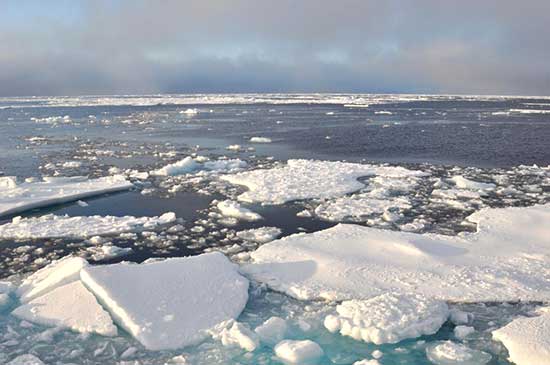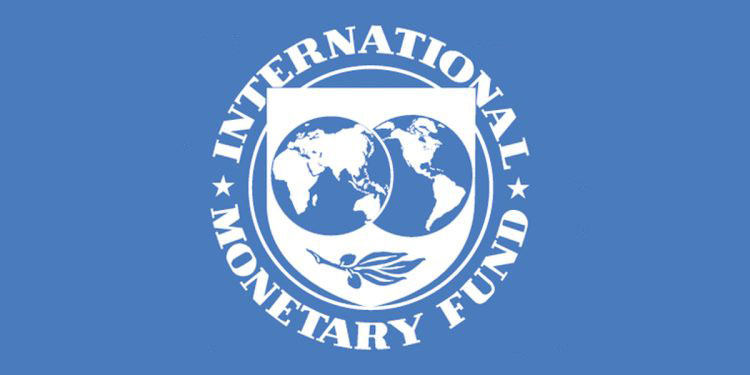News
Arctic winter sea ice in 2021 joint seventh-lowest on record, finds NASA

Sea ice in the Arctic has reached its maximum extent for 2021 — tying with 2007’s as the seventh-smallest extent of winter sea ice. This may mean that the Arctic is losing more ice than it can recover.
The ice peaked at 14.77 million square kilometres (km2) on March 21, according to scientists at the National Aeronautics and Space Administration (NASA)-supported National Snow and Ice Data Center (NSIDC).
The NSIDC has termed the development as “uneventful maximum”. It, however, noted it followed an “exceptional” year for sea ice: Arctic’s summer minimum in September 2020 was the second-lowest on record.
This year’s maximum was 870,000 km2 below the 1981-2010 average maximum and 360,000 km2 above the lowest maximum recorded in 2017, NSIDC noted.
The ice extent in the Arctic changes throughout the year: It grows during the winter before reaching its peak in February or March. It then melts throughout the spring and summer towards its annual minimum, which is typically in September.
Carbon Brief quoted Ted Scambos, senior research scientist at NSIDC, as saying:
“The sea ice maximum in 2021 is not close to a record, but still quite low compared to any year prior to 2000.”
The low ice extent, according to NSIDC, was because of the positive phase of the phenomenon called Arctic Oscillation. During this phase, a ring of strong winds circulating around the North Pole acts to confine colder air across polar regions.
This pattern transported ice from the Siberian coast, across the pole and out of the Arctic Ocean, leaving thinner ice along the Siberian coast which was more prone to melting.
According to NSIDC:
From 13 October into early November, the daily sea ice extent was the lowest for that day in the satellite record. The low sea ice extent left vast expanses of open water across the Arctic throughout November, which lost heat to the atmosphere and caused hotspots to form near the surface of the ocean.
– DTE
Latest News
Sun directly overhead Delft, Pooneryn, Elephant pass and Chundikulam at about 12:10 noon today (14th)

On the apparent northward relative motion of the sun, it is going to be directly over the latitudes of Sri Lanka during 05th to 14th of April in this year.
The nearest areas of Sri Lanka over which the sun is overhead today (14th) are Delft, Pooneryn, Elephant pass and Chundikulam at about 12:10 noon.
Business
IMF staff team concludes visit to Sri Lanka

An International Monetary Fund (IMF) team led by Evan Papageorgiou visited Colombo from April 3 to 11, 2025. After constructive discussions in Colombo, Mr. Papageorgiou issued the following statement:
“Sri Lanka’s ambitious reform agenda supported by the IMF Extended Fund Facility (EFF) continues to deliver commendable outcomes. The post-crisis growth rebound of 5 percent in 2024 is impressive. Inflation declined considerably in recent quarters and has fallen to ‑2.6 percent at end-March 2025. Gross official reserves increased to US$6.5 billion at end-March 2025 with sizeable foreign exchange purchases by the central bank. Substantial fiscal reforms have strengthened public finances.
“The recent external shock and evolving developments are creating uncertainty for the Sri Lankan economy, which is still recovering from its own economic crisis. More time is needed to assess the impact of the global shock and how its implications for Sri Lanka can be addressed within the contours of its IMF-supported program.
“The government’s sustained commitment to program objectives is ensuring policy continuity and program implementation remains strong. Going forward, sustaining the reform momentum is critical to safeguard the hard-won gains of the program and put the economy on a path toward lasting macroeconomic stability and higher inclusive growth.
“Against increased global uncertainty, sustained revenue mobilization efforts and prudent budget execution in line with Budget 2025 are critical to preserve the limited fiscal space. Boosting tax compliance, including by reinstating an efficient and timely VAT refund mechanism, will help contribute to revenue gains without resorting to additional tax policy measures. Avoiding new tax exemptions will help reduce fiscal revenue leakages, corruption risks and build much needed fiscal buffers, including for social spending to support Sri Lanka’s most vulnerable. Restoring cost recovery in electricity pricing will help minimize fiscal risks arising from the electricity state-owned enterprise.
“The government has an important responsibility to protect the poor and vulnerable at this uncertain time. It is important to redouble efforts to improve targeting, adequacy, and coverage of social safety nets. Fiscal support needs to be well-targeted, time-bound, and within the existing budget envelope.
“While inflation remains low, continued monitoring is warranted to ensure sustained price stability and support macroeconomic stability. Against ongoing global uncertainty, it remains important to continue rebuilding external buffers through reserves accumulation.
“Discussions are ongoing, and the authorities are encouraged to continue to make progress on restoring cost-recovery electricity pricing, strengthening the tax exemptions framework, and other important structural reforms.
“The IMF team held meetings with His Excellency President and Finance Minister Anura Kumara Dissanayake, Honorable Prime Minister Dr. Harini Amarasuriya ; Honorable Labor Minister and Deputy Minister of Economic Development Prof. Anil Jayantha Fernando, Honorable Deputy Minister of Finance and Planning Dr. Harshana Suriyapperuma, Central Bank of Sri Lanka Governor Dr. P. Nandalal Weerasinghe, Secretary to the Treasury Mr. K M Mahinda Siriwardana, Senior Economic Advisor to the President Duminda Hulangamuwa, and other senior government and CBSL officials. The team also met with parliamentarians, representatives from the private sector, civil society organizations, and development partners.
“We would like to thank the authorities for the excellent collaboration during the mission. Discussions are continuing with the goal of reaching staff-level agreement in the near term to pave the way for the timely completion of the fourth review. We reaffirm our commitment to support Sri Lanka at this uncertain time.”
News
New Year dawns at the auspicious time of 03.21 a.m. tomorrow (14).

The Sinhala and Tamil New Year will dawn at the auspicious time of 03.21 a.m. tomorrow (14th Monday).
The auspicious time to light the hearth and prepare the first meal is at 0404 am on Monday (14) facing South.
The auspicious hour to commence work, perform the first transactions and partaking of the first meal is at 0644 am facing South dressed in white coloured clothes.
-

 News2 days ago
News2 days agoSuspect injured in police shooting hospitalised
-

 Features3 days ago
Features3 days agoRobbers and Wreckers
-

 Features5 days ago
Features5 days agoSri Lanka’s Foreign Policy amid Geopolitical Transformations: 1990-2024 – Part III
-

 Midweek Review5 days ago
Midweek Review5 days agoInequality is killing the Middle Class
-

 Business2 days ago
Business2 days agoSanjiv Hulugalle appointed CEO and General Manager of Cinnamon Life at City of Dreams Sri Lanka
-

 Features6 days ago
Features6 days agoA brighter future …
-

 Business4 days ago
Business4 days agoNational Anti-Corruption Action Plan launched with focus on economic recovery
-

 News5 days ago
News5 days agoIChemC signs MoU with KIIT, India











